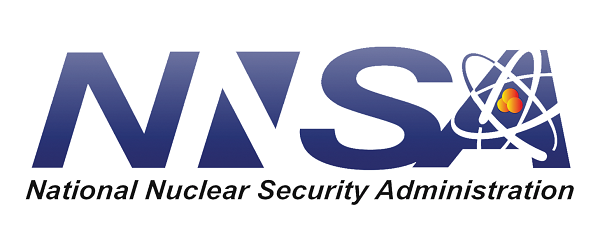 Sept. 21, 2001 — The Department of Energy’s National Nuclear Security Administration’s (DOE/NNSA’s) Lawrence Livermore National Laboratory (LLNL) announced the awarding of a subcontract to Dell Technologies for additional supercomputing systems to support NNSA’s nuclear deterrent mission.
Sept. 21, 2001 — The Department of Energy’s National Nuclear Security Administration’s (DOE/NNSA’s) Lawrence Livermore National Laboratory (LLNL) announced the awarding of a subcontract to Dell Technologies for additional supercomputing systems to support NNSA’s nuclear deterrent mission.
In partnership with Los Alamos National Laboratory (LANL) and Sandia National Laboratories (SNL), the second Commodity Technology Systems contract (CTS-2) is funded by NNSA’s Advanced Simulation and Computing (ASC) program. It will provide at least $40 million for more than 40 petaFLOPs of expanded computing capacity delivered to the NNSA Tri-Labs (LLNL, LANL, and SNL).
The computing systems built under the CTS-2 contract will be deployed at the Tri-Labs in building blocks called “scalable units” (SUs), with each SU representing approximately 1.5 petaFLOPs of computing power. Initial system deliveries are scheduled to begin in mid-2022 and will continue through 2025. They will replace the current ASC commodity systems which were sourced by the 2015 CTS-1 contract and are now nearing retirement.
“The CTS-2 systems will serve the NNSA stockpile management and production modernization programs, along with other mission-critical efforts underpinning our stockpile stewardship program,” said Thuc Hoang, director of NNSA ASC program. “We look forward to working closely with Dell Technologies as our new vendor partner in delivering more powerful and energy-efficient computing cycles to our customers.”
High-performance computing is the bedrock of the ASC program, which develops and deploys extensive modeling and simulation capabilities to ensure the safety, security, and reliability of the Nation’s nuclear weapons stockpile in the absence of underground testing.
![]()
As part of the ASC program platform strategy, the CTS procurement model reduces costs by standardizing hardware and software across the three NNSA national laboratories. The CTS-2 SU hardware will couple with the LLNL-led Tri-Laboratory Operating System Software (TOSS) and provide the foundation for the common ASC user simulation environment. The CTS-2 SUs will incorporate next-generation Intel Xeon Scalable processors (codenamed Sapphire Rapids) with next-generation Dell EMC PowerEdge servers. Each laboratory will configure the SUs into more powerful multiple-SU systems according to its specific mission needs.
As the “workhorses” of the Tri-Labs, commodity-technology-based systems are a cost-effective approach to high performance computing, taking on most of the daily workload while allowing NNSA’s more powerful Advanced Technology System (ATS) supercomputers, such as the Sierra system at LLNL and Trinity system at LANL, to focus on the most complex problems critical to NNSA’s stockpile stewardship program.



